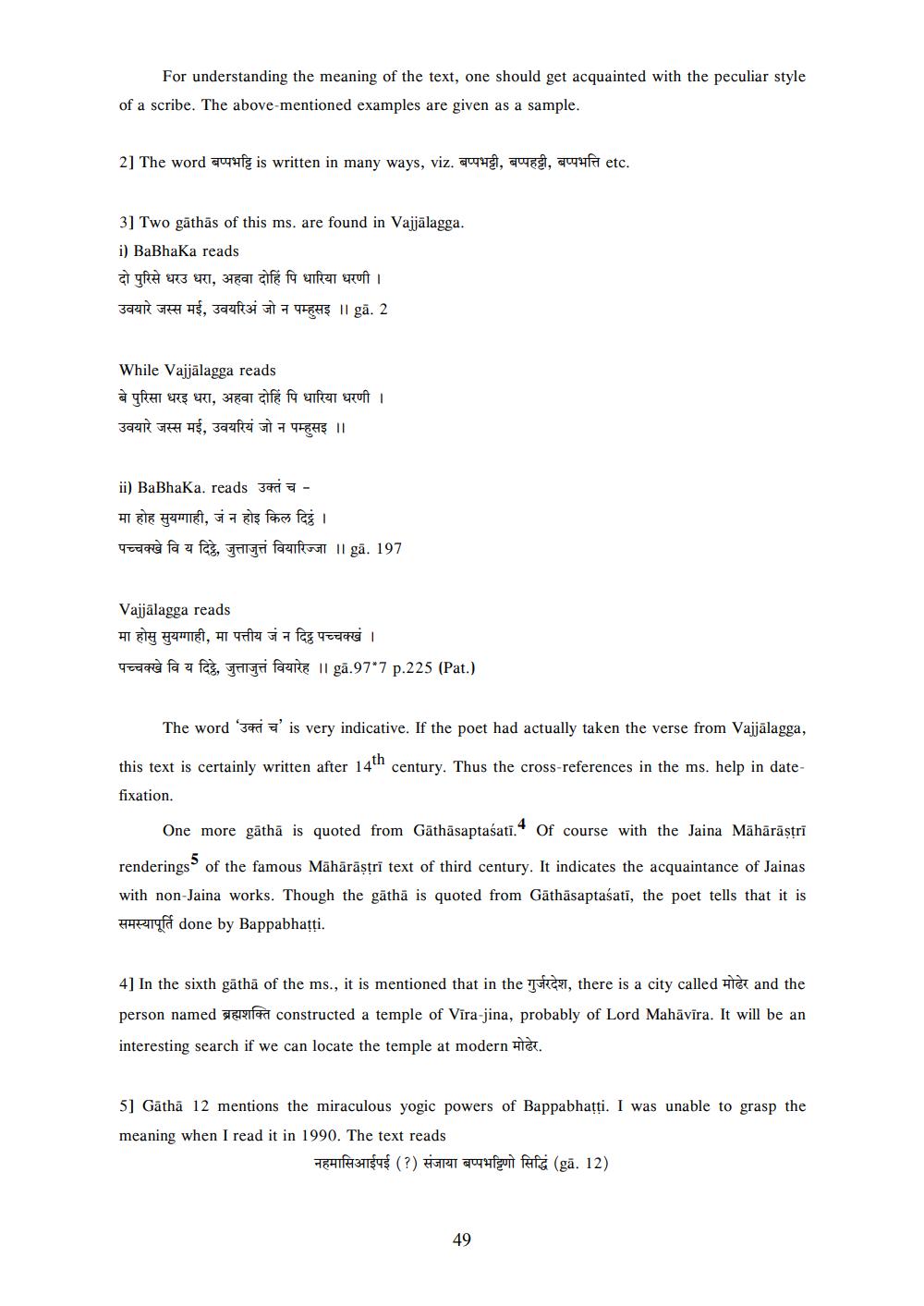________________
For understanding the meaning of the text, one should get acquainted with the peculiar style of a scribe. The above-mentioned examples are given as a sample.
2] The word बप्पट्टि is written in many ways, viz. बप्पभट्टी, बप्पहट्टी, बप्पभत्ति etc.
3] Two gāthās of this ms. are found in Vajjalagga. i) BaBhaKa reads दो पुरिसे धरउ धरा, अहवा दोहिं पि धारिया धरणी। उवयारे जस्स मई, उवयरिअं जो न पम्हुसइ ।। ga. 2
While Vajjālagga reads बे पुरिसा धरइ धरा, अहवा दोहिं पि धारिया धरणी । उवयारे जस्स मई, उवयरियं जो न पम्हुसइ ।।
ii) BaBhaka. reads उक्तं च - मा होह सुयग्गाही, जं न होइ किल दिटुं । पच्चक्खे वि य दिटे, जुत्ताजुत्तं वियारिज्जा || ga. 197
Vajjālagga reads मा होसु सुयग्गाही, मा पत्तीय जं न दिट्ठ पच्चक्खं । पच्चक्खे वि य दिटे, जुत्ताजुत्तं वियारेह ।। ga.97*7 p.225 (Pat.)
The word 347 z' is very indicative. If the poet had actually taken the verse from Vajjālagga,
this text is certainly written after 14" century. Thus the cross-references in the ms. help in datefixation.
One more gāthā is quoted from Gāthāsaptaśati. Of course with the Jaina Māhārāstrī
renderings of the famous Māhārāştri text of third century. It indicates the acquaintance of Jainas with non-Jaina works. Though the gātha is quoted from Gāthāsaptasati, the poet tells that it is समस्यापूर्ति done by Bappabhatti.
4] In the sixth gāthā of the ms., it is mentioned that in the TGA, there is a city called Hic and the person named and constructed a temple of Vira-jina, probably of Lord Mahāvīra. It will be an interesting search if we can locate the temple at modern मोढेर.
5] Gatha 12 mentions the miraculous yogic powers of Bappabhatti. I was unable to grasp the meaning when I read it in 1990. The text reads
नहमासिआईपई (?) संजाया बप्पभट्टिणो सिद्धिं (ga. 12)




